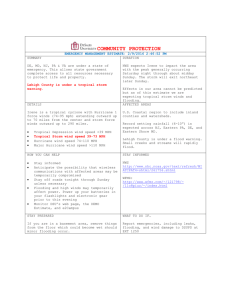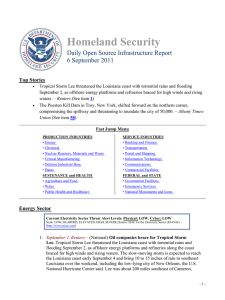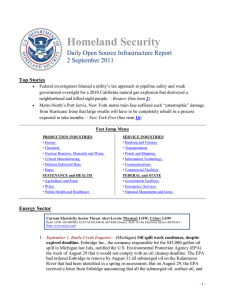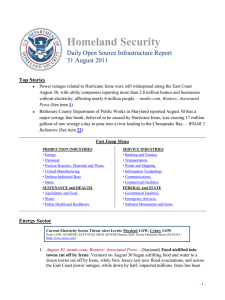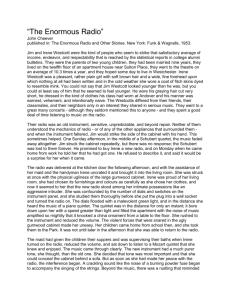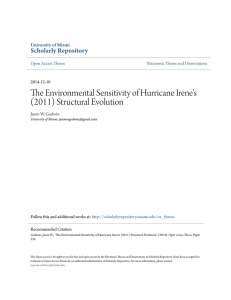In the Wake of Hurricane Irene
advertisement
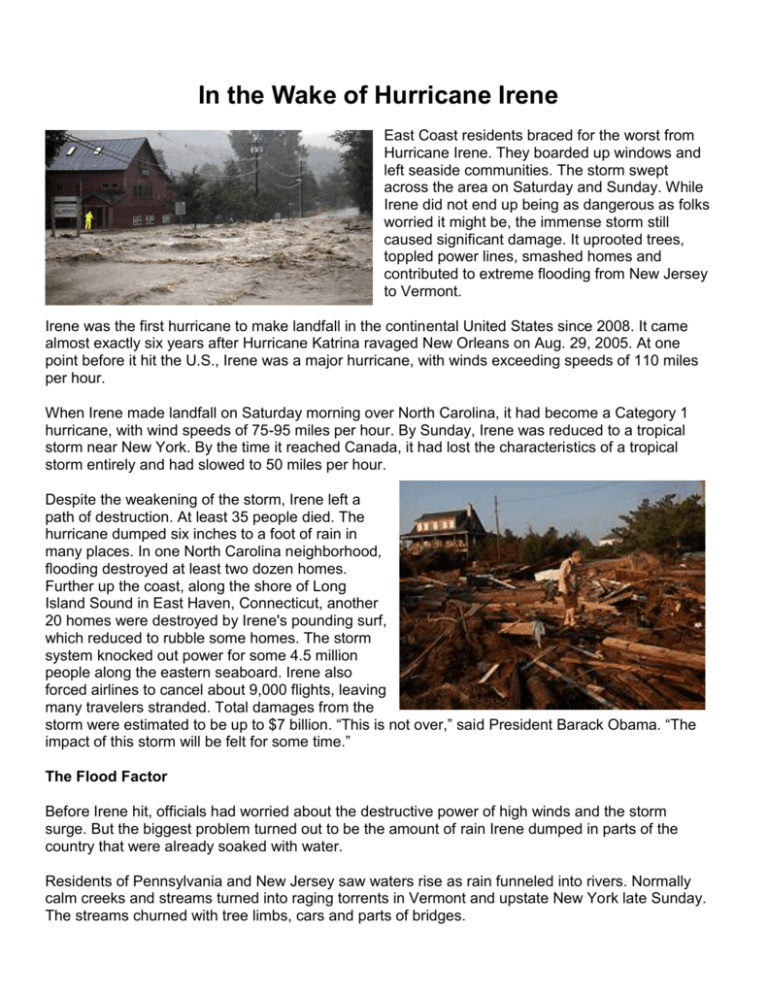
In the Wake of Hurricane Irene East Coast residents braced for the worst from Hurricane Irene. They boarded up windows and left seaside communities. The storm swept across the area on Saturday and Sunday. While Irene did not end up being as dangerous as folks worried it might be, the immense storm still caused significant damage. It uprooted trees, toppled power lines, smashed homes and contributed to extreme flooding from New Jersey to Vermont. Irene was the first hurricane to make landfall in the continental United States since 2008. It came almost exactly six years after Hurricane Katrina ravaged New Orleans on Aug. 29, 2005. At one point before it hit the U.S., Irene was a major hurricane, with winds exceeding speeds of 110 miles per hour. When Irene made landfall on Saturday morning over North Carolina, it had become a Category 1 hurricane, with wind speeds of 75-95 miles per hour. By Sunday, Irene was reduced to a tropical storm near New York. By the time it reached Canada, it had lost the characteristics of a tropical storm entirely and had slowed to 50 miles per hour. Despite the weakening of the storm, Irene left a path of destruction. At least 35 people died. The hurricane dumped six inches to a foot of rain in many places. In one North Carolina neighborhood, flooding destroyed at least two dozen homes. Further up the coast, along the shore of Long Island Sound in East Haven, Connecticut, another 20 homes were destroyed by Irene's pounding surf, which reduced to rubble some homes. The storm system knocked out power for some 4.5 million people along the eastern seaboard. Irene also forced airlines to cancel about 9,000 flights, leaving many travelers stranded. Total damages from the storm were estimated to be up to $7 billion. “This is not over,” said President Barack Obama. “The impact of this storm will be felt for some time.” The Flood Factor Before Irene hit, officials had worried about the destructive power of high winds and the storm surge. But the biggest problem turned out to be the amount of rain Irene dumped in parts of the country that were already soaked with water. Residents of Pennsylvania and New Jersey saw waters rise as rain funneled into rivers. Normally calm creeks and streams turned into raging torrents in Vermont and upstate New York late Sunday. The streams churned with tree limbs, cars and parts of bridges. In Rockingham, Vermont, a 141-year-old covered bridge was swept away by the roiling, muddy Williams River. Hundreds of people in Vermont were told to leave their homes after Irene dumped several inches of rain on the landlocked state. Governor Peter Shumlin called it the worst flooding in a century. The state was declared a federal disaster area. “We prepared for the worst and we got the worst in central and southern Vermont,” Shumlin said Monday. The area has extensive damage. Communities were cut off because of hundreds of road closures and the loss of at least three historic covered bridges. At one point, state officials thought they might have to flood Montpelier, the capital, to relieve pressure on a dam. On Monday, up and down the East Coast, people returned to work and area airports reopened. But for many communities as costly cleanups began, it became apparent that the effects of Irene will be felt for weeks and months to come. As you do your AOW, remember that you need to be doing the following: 1. Mark your confusion. 2. Show evidence of understanding. 3. Write a one-page reflection. 4. Discuss article with your parent/guardian and have them write a one-page reflection about your discussion. Some possible reflection questions to help get you started: 1. How do you think East Coast residents felt waiting for the storm and not knowing how bad it would be? 2. What can we do to help the East Coast residents that were affected by the storm? 3. While reading the article about Hurricane Irene, what sentences stood out for you and how did they make you feel?

